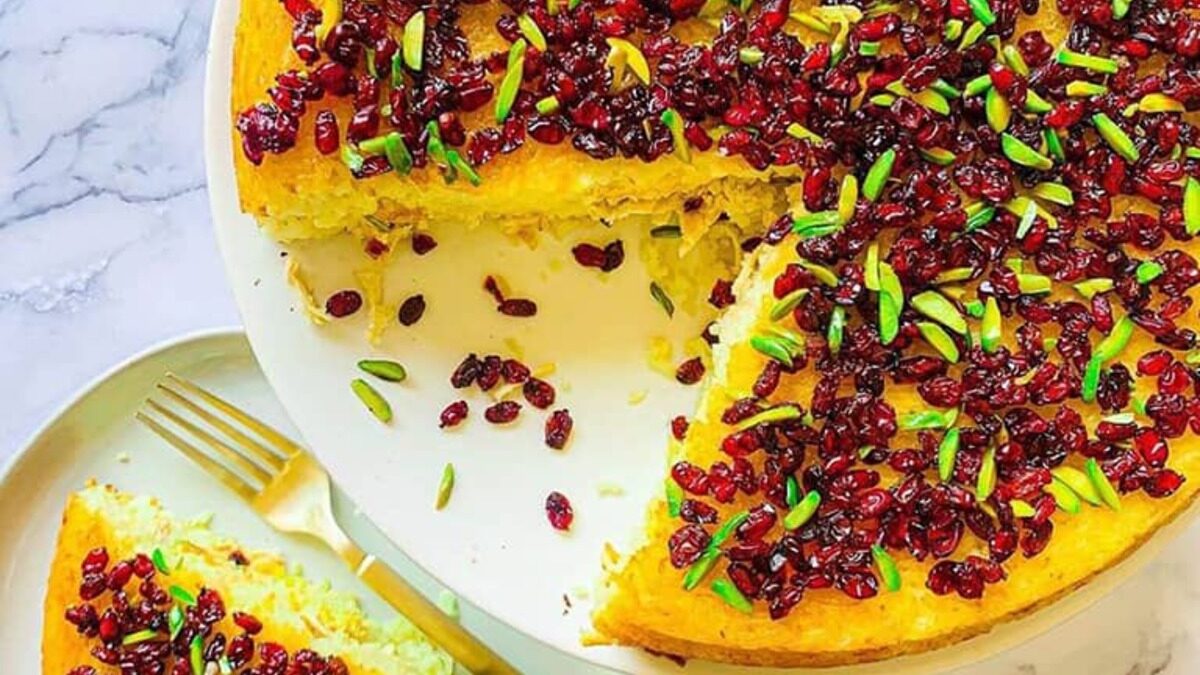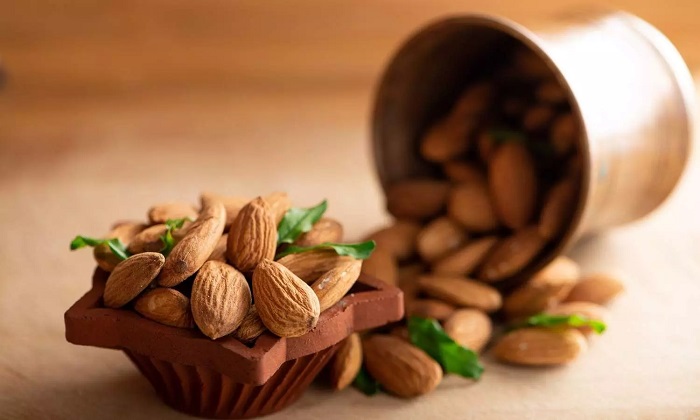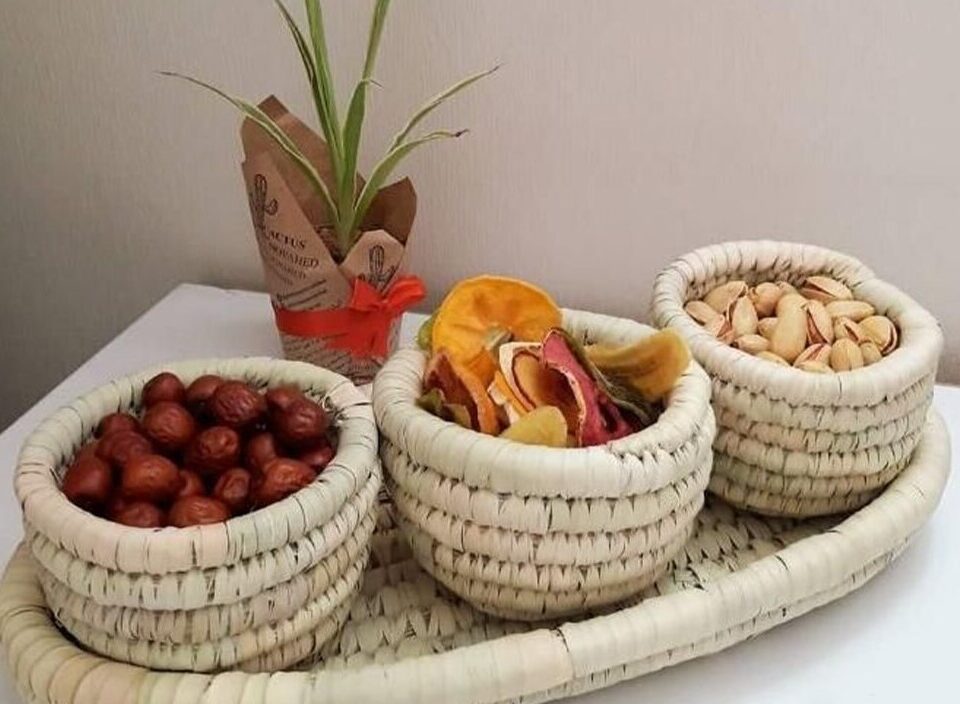
Organic vs. Non-Organic Dried Fruits: Which One Is Better?
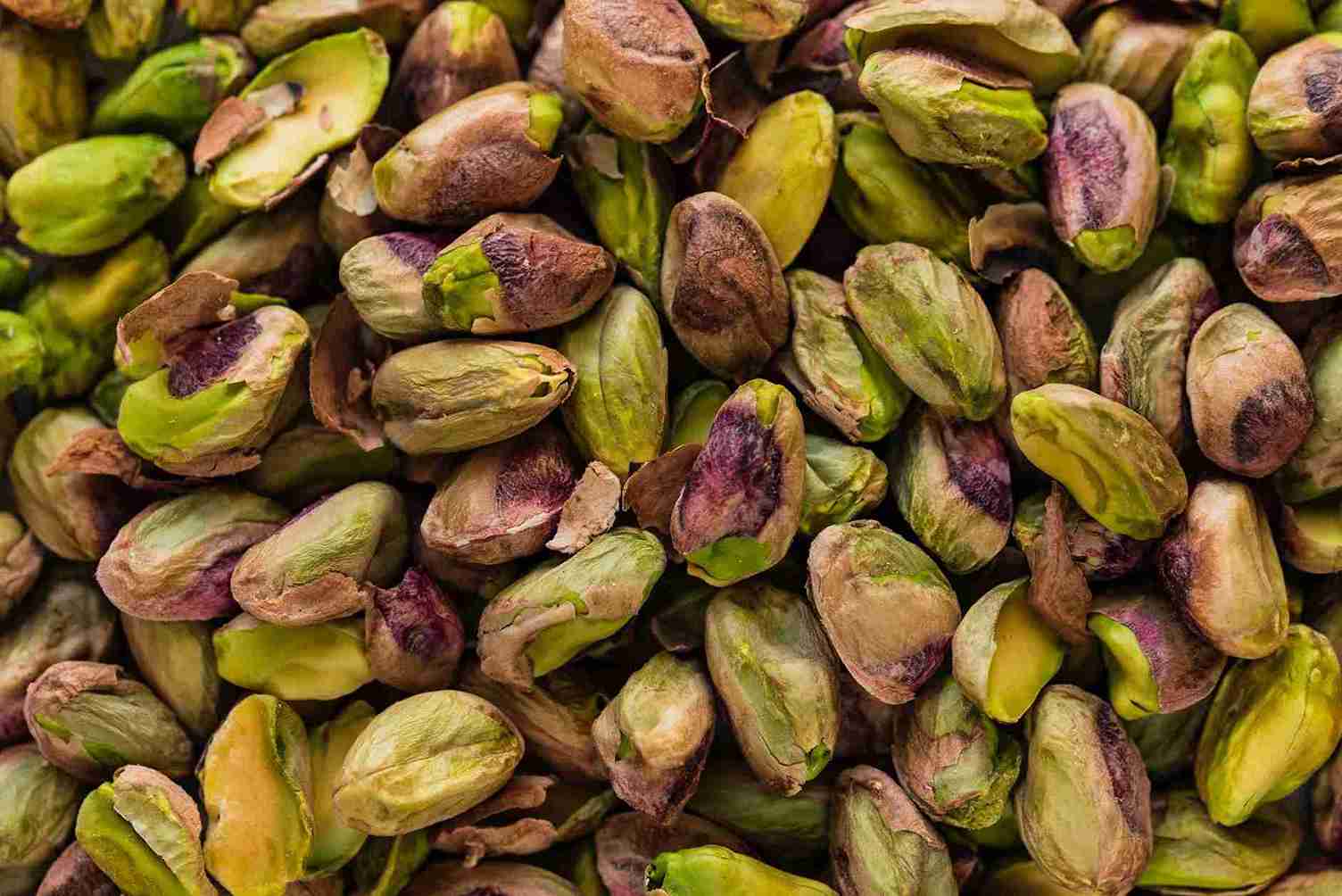
Health Benefits of Iranian Pistachios
Using Nuts in Classic Iranian Dishes Like Fesenjan and Ajil Polo
Nuts play a central role in Persian cuisine, adding richness, texture, and depth of flavor to a variety of dishes. Iranian cooking incorporates nuts like walnuts, almonds, pistachios, and hazelnuts to enhance both savory and sweet dishes, making them a key ingredient in traditional recipes. Let’s explore two classic Iranian dishes that showcase the use of nuts: Fesenjan and Ajil Polo.
1. Fesenjan (Pomegranate and Walnut Stew)
Fesenjan is a beloved Persian stew known for its rich, tangy, and slightly sweet flavor, made primarily from ground walnuts and pomegranate molasses. This dish has deep roots in Persian history and is typically served at special occasions like weddings, family gatherings, and festive meals.
Ingredients:
- 500g chicken or lamb (cubed or on the bone)
- 2 cups ground walnuts
- 1 cup pomegranate molasses
- 1 large onion, finely chopped
- 1 tsp turmeric
- 1/2 tsp cinnamon (optional)
- 4-5 cups water or chicken broth
- Salt and pepper to taste
- 1 tbsp sugar (optional, to balance the tartness)
- Cooked rice (for serving)
Instructions:
- In a large pot, heat oil and sauté the onions until golden brown. Add the turmeric and stir for a minute until fragrant.
- Add the chicken or lamb pieces and brown them on all sides.
- Stir in the ground walnuts and let them cook for a few minutes, releasing their oil and flavor.
- Pour in the pomegranate molasses and water (or broth), ensuring the meat is covered. Bring to a boil, then reduce the heat and simmer for 1-1.5 hours, stirring occasionally.
- As the stew cooks, it will thicken and develop a deep, rich flavor. If the stew becomes too thick, you can add more water. If it’s too tart, add sugar to balance the flavors.
- Once the meat is tender and the sauce is thick, season with salt and pepper to taste.
- Serve Fesenjan over a bed of fluffy saffron rice.
Nuts Highlight:
Ground walnuts are the star of Fesenjan, giving the dish a creamy texture and nutty flavor. The walnuts also add healthy fats, protein, and a rich mouthfeel to the dish, making it both hearty and luxurious.

Fesenjan (Pomegranate and Walnut Stew)
2. Ajil Polo (Persian Nut and Dried Fruit Rice)
Ajil Polo is a festive Persian dish made with a combination of nuts, dried fruits, and fragrant rice. This dish is often served during special occasions such as Nowruz (Persian New Year) and other family celebrations. The combination of sweet dried fruits and crunchy nuts with aromatic spices makes Ajil Polo a delightful dish.
Ingredients:
- 2 cups basmati rice
- 1/2 cup mixed nuts (pistachios, almonds, walnuts)
- 1/2 cup mixed dried fruits (raisins, barberries, apricots)
- 2 tbsp butter or oil
- 1 pinch saffron, dissolved in 2 tbsp warm water
- 1 tbsp sugar (optional, to balance the tartness of barberries)
- Salt to taste
- 1/2 tsp cinnamon and cardamom (optional for added warmth)
Instructions:
- Wash the rice under cold water until the water runs clear. Soak the rice in water for 30 minutes, then drain.
- Cook the rice in a large pot of boiling salted water until al dente (6-8 minutes), then drain and set aside.
- In a separate pan, heat the butter or oil and gently toast the mixed nuts until golden brown, taking care not to burn them.
- Add the dried fruits to the pan and sauté for another minute or two. If using barberries, sprinkle a little sugar to reduce their tartness.
- In a large pot, layer half of the cooked rice, drizzle some saffron water over it, and top with half of the nut and fruit mixture.
- Add the remaining rice on top and finish with another layer of nuts and dried fruits. Optionally, sprinkle cinnamon and cardamom for a warm aroma.
- Cover the pot with a lid and steam on low heat for about 20-30 minutes until the rice is fluffy and fully cooked.
- Serve the Ajil Polo with a side of chicken or lamb, or enjoy it as a vegetarian dish on its own.
Nuts Highlight:
Pistachios, almonds, and walnuts add a delightful crunch to the dish, while the dried fruits like raisins and barberries provide a sweet-tart contrast to the fragrant rice. The nuts not only add texture but also a boost of healthy fats and protein, making Ajil Polo both nutritious and satisfying.
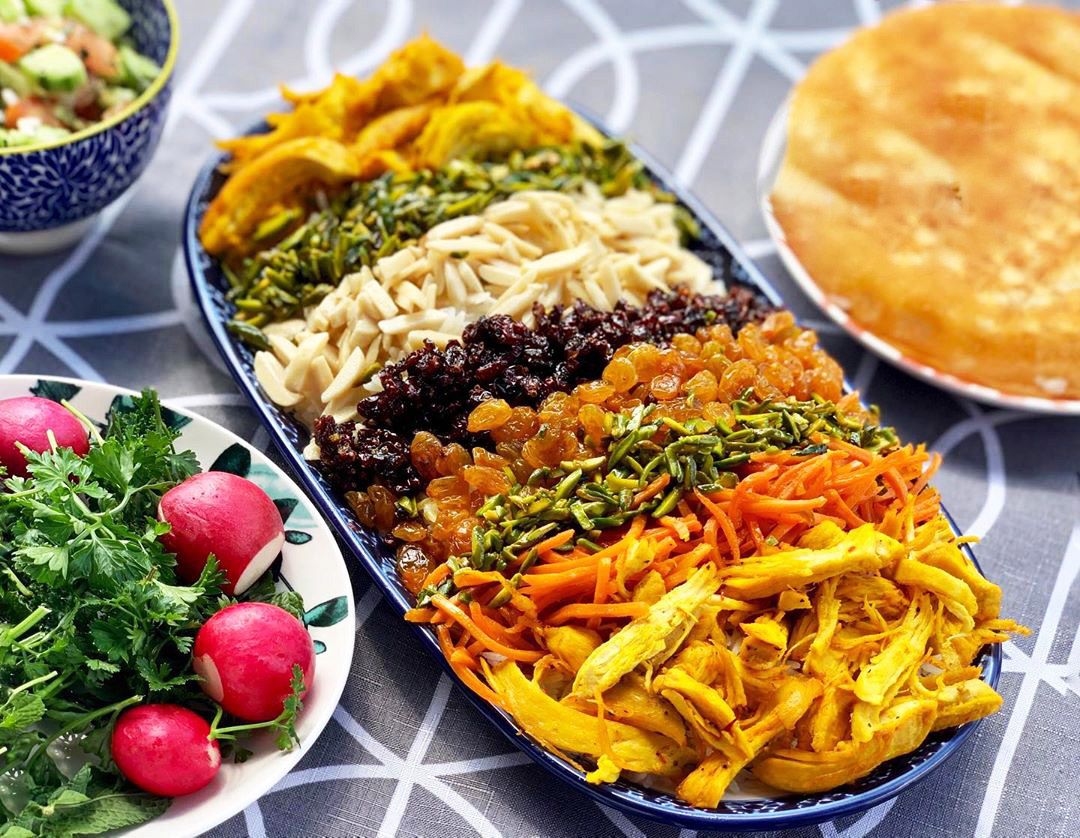
Ajil Polo
Other Traditional Dishes Featuring Nuts
Baghali Polo ba Mahicheh (Rice with Broad Beans, Dill, and Lamb)
Although the main ingredients in this dish are broad beans and dill, nuts such as pistachios or almonds are sometimes sprinkled on top for added flavor and a crunchy texture. The nuts also pair beautifully with the tender lamb and herb-infused rice.
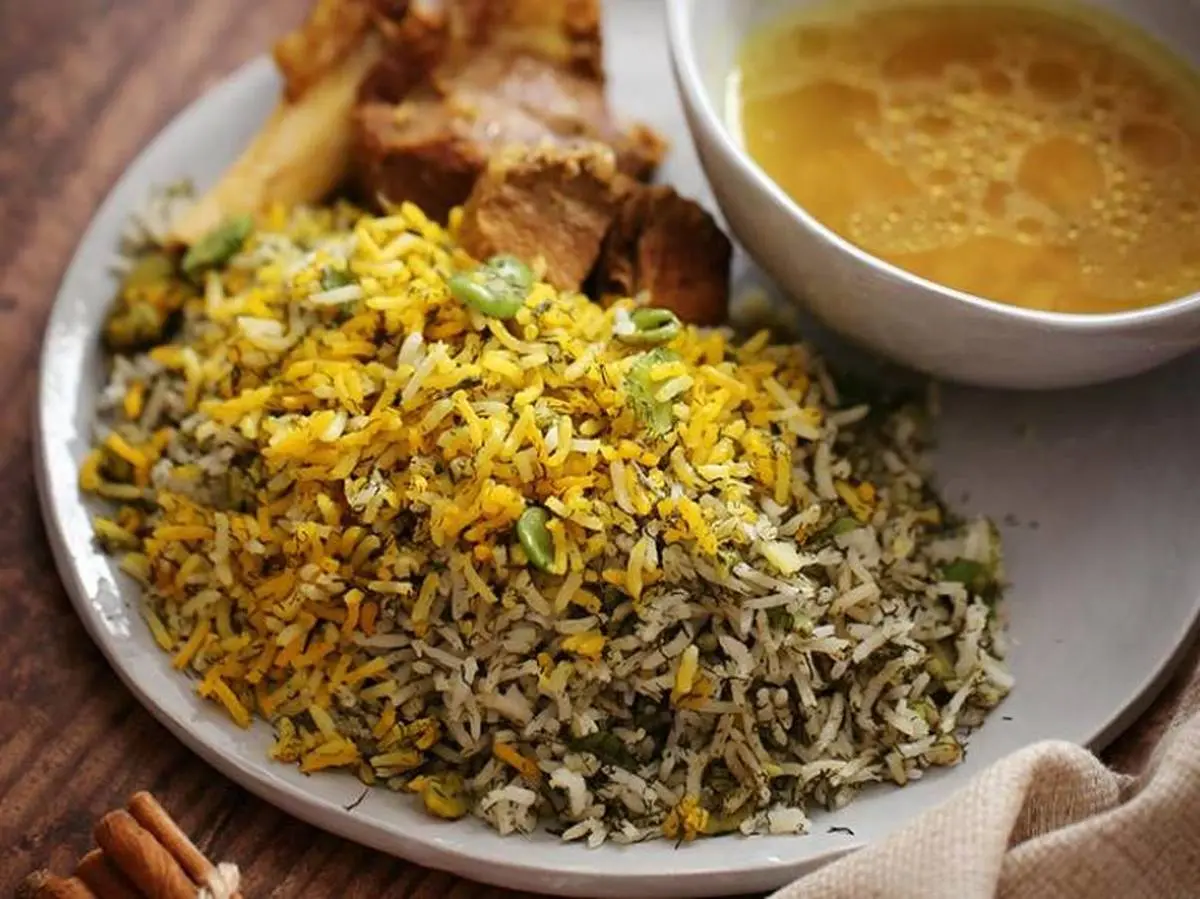
Baghali Polo ba Mahicheh
Shirin Polo (Sweet Rice with Nuts and Orange Peel)
Shirin Polo is another festive rice dish that incorporates a blend of nuts like pistachios and almonds, along with candied orange peel and carrots. The nuts add a rich crunch to the sweet, aromatic rice, making it a popular choice for weddings and special celebrations.
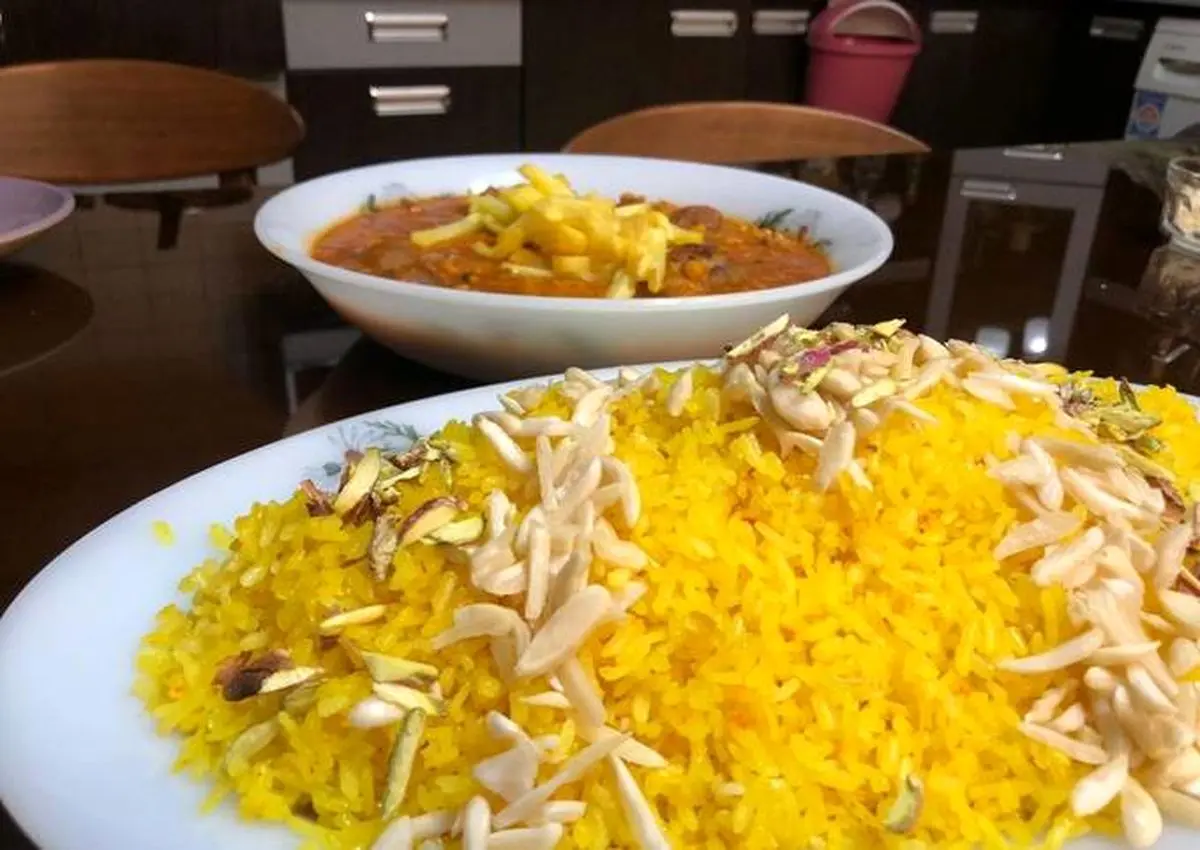
Shirin Polo
Why Nuts Are Essential in Iranian Cuisine
1. Flavor and Texture
Nuts bring both flavor and texture to Iranian dishes. In stews like Fesenjan, walnuts create a rich and creamy base, while in rice dishes like Ajil Polo, nuts provide a delightful crunch and contrast to the softness of the rice.
2. Nutritional Value
Nuts are packed with healthy fats, protein, fiber, and essential vitamins and minerals like vitamin E, magnesium, and antioxidants. They make dishes more nutritious and filling, while also contributing to overall health and well-being.
3. Aesthetic Appeal
Nuts, particularly pistachios and almonds, are often used as garnishes to enhance the visual appeal of a dish. Their vibrant colors add elegance and sophistication to many Persian dishes, making them perfect for special occasions.
Conclusion
Nuts are an integral part of Iranian cuisine, adding depth, texture, and nutritional value to traditional dishes. Whether used as a key ingredient in stews like Fesenjan or as a crunchy topping in rice dishes like Ajil Polo, nuts bring a unique richness that elevates Persian cooking. Their versatility, health benefits, and delightful flavor make them a beloved component of Iranian culinary traditions.

